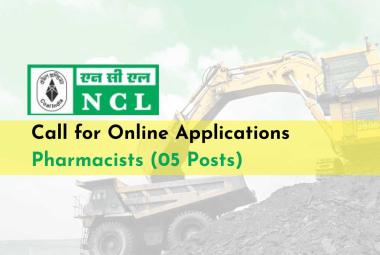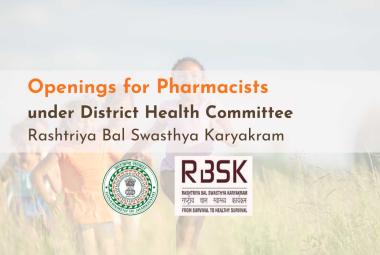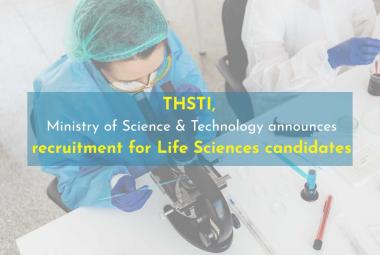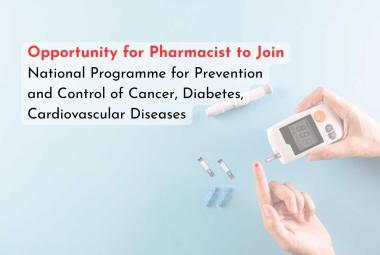.jpg) About Authors:
About Authors:
Miss Tejaswini Sharma 1*, Mr. Govind Bhandari 2
1MAHAKAL INSTITUTE OF PHARMACEUTICAL STUDIES, UJJAIN (M.P.) 456010
2ASSISTANT PROFESSOR,
MAHAKAL INSTITUTE OF PHARMACEUTICAL STUDIES, UJJAIN (M.P.) 456010
*Sharma.tejaswini@gmail.com
ABSTRACT:
The psychosomatic disorders are variant in nature and to get rid of this problem, we must understand the basics of its causative factors and their effects on sole body.
Now being herbal drugs are comparatively less toxic and has negligible side effects the use of these drugs on such type of disorders are quite encouraging. So here is the brief study on seldom diseases and their causative factors, and treatment part by herbs accordingly discoursed.
[adsense:336x280:8701650588]
REFERENCE ID: PHARMATUTOR-ART-1709
INTRODUCTION:
The human being is composed of body, mind and soul. The soul is influenced by many sort of surrounding or circumstances, but the first two (the body and mind) are quite susceptible with all around its periphery and contacts.
The body used to affects directly and exhibits its respond accordingly, but the mind when affected by its environment; it shows its reactions through the body’s physical behavior changes. This phenomenon when a person’s body exhibits psychic behavior changes due to surrounding and atmosphere that may called as “Psychosomatic Disorders”
Psychosomatic disorder, also called Psycho physiologic Disorder, condition in which psychological stresses adversely affect physiological (somatic) functioning to the point of distress. It is a condition of dysfunction or structural damage in bodily organs through inappropriate activation of the involuntary nervous system and the glands of internal secretion. Thus, the psychosomatic symptom emerges as a physiological concomitant of an emotional state. In a state of rage, for example, the angry person’s blood pressure is likely to be elevated and his pulse and rate to be increased. When the anger passes, the heightened physiologic processes usually subside. If the person has a persistent inhibited aggression (chronic rage), however, which he is unable to express overtly, the emotional state remains unchanged, though unexpressed in the overt behaviour, and the physiological symptoms associated with the angry state persist. With time, such a person becomes aware of the physiological dysfunction. Very often he develops concern over the resulting physical signs and symptoms, but he denies or is unaware of the emotions that have evoked the symptoms.
Psychosomatic disorders may affect almost any part of the body, though they are usually found in systems not under voluntary control. Research by psychiatrist Franz Alexander and his colleagues at the Chicago Institute of Psychoanalysis in the 1950s and 1960s suggested that specific personality traits and specific conflicts may create particular psychosomatic illnesses, but it is generally believed that the form a disorder takes is due to individual vulnerabilities. Emotional stress is assumed to aggravate existing illnesses, and there is some evidence that it may precipitate illnesses not usually considered to be psychosomatic (e.g., cancer, diabetes) in individuals predisposed to them.Psychosomatic disorders resulting from stress may include hypertension, respiratory ailments, gastrointestinal disturbances, migraine and tension headaches, pelvic pain, impotence, frigidity, dermatitis, and ulcers. Many patients suffering from psychosomatic diseases respond to a combination of drug therapy, psychoanalysis, and behavior therapy. In less severe cases, patients can learn to manage stress without drugs.
Meaning of psychosomatic disorder:
Psychosomatic means mind (psyche) and body (soma). A psychosomatic disorder is a disease which involves both mind and body. Some physical diseases are thought to be particularly prone to be made worse by mental factors such as stress and anxiety. Your current mental state can affect how bad a physical disease is at any given time. Psychosomatic means mind-body illness; illness where emotional factors produce physical symptoms. These arise mainly from over activity of the autonomic nervous system which is influenced by the emotional state, e.g., chronic blushing may be due to feelings of guilt, the skin arterioles dilate as a result of autonomic over activity, inflammation follows death of some skin cells results in the development of a rash.
[adsense:468x15:2204050025]
History:
The term ‘psychosomatic’ is proposed as early as 1818. In 1935 Dunbar published a book on ‘emotions and body changes’ The high incidence of psychosomatic disorders among military personnel exposed to wartime stresses during 2nd world war also contributes to the concept of psychosomatic diseases .Examples of modern researches are:
• Animal experiment of Pavlov on the conditioned salivary reflex(1928)
• Cannon-1932-physiological effect of intense emotional stimuli. He demonstrated that stimulation of autonomic nervous system particularly sympathetic nervous system 1950-harold Wolff observed physiology of gastro intestinal tract appear to correlate with the emotional state. Hyper function associated with hostility and hypo function associated with sadness. The history of psychosomatic medicine dates to ancient beliefs that the body can be affected by external forces.
Sigmund Freud famously studied psychosomatic illnesses, which informed his theories of the unconscious mind and repression. Many identifiable illnesses have previously been labeled as ‘hysterical’ or ‘psychosomatic’, for example: asthma, allergies, false pregnancy, and migraines. Some illnesses are under debate, including multiple chemical sensitivity, Gulf War syndrome, and chronic fatigue syndrome. Some people suggest that stigmatic suffer a psychosomatic illness based on identifying with the biblical crucified Jesus. The term “psychosomatic” has developed a negative connotation in modern medicine, being confused with malingering, mental illness or outright fakery. Psychosomatic pain is difficult to differentiate from the above conditions but actual psychosomatic pain is real pain caused by unconscious mind rather than symptoms of illness or injury. Psychosomatic illness can result from problems with relationships, stress or other non-physical causes, often influenced by external factors or individuals.
NOW YOU CAN ALSO PUBLISH YOUR ARTICLE ONLINE.
SUBMIT YOUR ARTICLE/PROJECT AT articles@pharmatutor.org
Subscribe to Pharmatutor Alerts by Email
FIND OUT MORE ARTICLES AT OUR DATABASE
PSYCHOSOMATIC DISEASE:
To an extent, most diseases are psychosomatic - involving both mind and body. There is a mental aspect to every physical disease. How we react to and cope with disease varies greatly from person to person. For example, the rash of psoriasis may not bother some people very much. However, the rash covering the same parts of the body in someone else may make them feel depressed and more ill.There can be physical effects from mental illness. For example, with some mental illnesses you may not eat, or take care of yourself, very well which can cause physical problems.However, the term psychosomatic disorder is mainly used to mean ... "a physical disease that is thought to be caused, or made worse, by mental factors".
Some physical diseases are thought to be particularly prone to be made worse by mental factors such as stress and anxiety. For example, psoriasis, eczema, stomach ulcers, high blood pressure, and heart disease. It is thought that the actual physical part of the illness (the extent of a rash, the level of the blood pressure, etc) can be affected by mental factors. This is difficult to prove. However, many people with these and other physical diseases say that their current mental state can affect how bad their physical disease is at any given time.
Some people also use the term psychosomatic disorder when mental factors cause physical symptoms, but where there is no physical disease. For example, a chest pain may be caused by stress, and no physical disease can be found. Physical symptoms that are caused by mental factors are discussed further in another leaflet called 'Somatisation and Somatoform Disorders'.
How can the mind affect physical diseases?
It is well known that the mind can cause physical symptoms. For example, when we are afraid or anxious we may develop: a fast heart rate, palpitations, feeling sick, shaking (tremor), sweating, dry mouth, chest pain, headaches, a knot in the stomach, and fast breathing. These physical symptoms are due to increased activity of nervous impulses sent from the brain to various parts of the body, and to the release of adrenaline into the bloodstream when we are anxious.
However, the exact way that the mind can cause certain other symptoms is not clear. Also, how the mind can affect actual physical diseases (rashes, blood pressure, etc) is not clear. It may have something to do with nervous impulses going to the body, which we do not fully understand. There is also some evidence that the brain may be able to affect certain cells of the immune system, which is involved in various physical diseases.
Causes of psychosomatic diseases:
Causes are numerous. Here are main ones. First, genetics, which commands a part of the richness of the links between temporal nervous system and vegetative nervous system, which conditions the effect of stress, of depression onto the body. Some people may never have psychosomatic diseases, even if they are stressed! Besides, stress is not the only cause of those diseases, but the way we manage stress. For example, if we deny a problem, it will go down in unconscious easier than if you look at the problem in front. It very important to get aware of denying problems, that which is, by definition impossible for the subject himself. Help of therapists or external sight needed. After stress, another cause is depression. Depression may induce symptoms even if the subject doesn’t seem depressed. We call that hidden depression.
Here is a list of psychosomatic disorders. It doesn’t mean that each is exclusively psychosomatic, but inclusively: it may not at all be. Your family physician can diagnose it. And also, it’s sometimes difficult to separate between system nervous, cardiovascular, because, many disorders touch more than one orgsan.
• Nervous system: headache, twitching, neurovegetative disorders (which may include a lot of other following disorders)
• Digestive system: gastric ulcer (with Helicobacter Pylori, hyperacidity, then stress may induce ulcers.), colopathy (constipation or diarrhoea)
• Cardiovascular system:arterial hypertension, throbbing of heart, infarct. Many processes can be seen in those cases. Hta can be the consequence of double bounded situation, of which I spoke higher. The only action body find is to increase tension, before it depresses and loses its energy. Throbbing of heart shows anxiety coming soon. For example, a month before an exam, you can feel anxious in stomach. A day before, it may be in heart. The upper level, the “quicker” anxiety. But besides this, throbbing may show that you deny problem you’re in front of. So you have to look at things as they are. As for infarction: first, you have a certain type of personality who can develop coronaries disease Intolerance to frustration is the key point. And also, your infarction does not appear haphazardly, frustration is not far in the past maybe.
• Immunologic disorders:allergy: asthma, connectivitis. Asthma is a rich psychosomatic manifestation. Summing up, been out-of-breath, symbolically. As for conjunctivitis, it’s difficult to find understanding ways which would explain this problem. Infections also, wherever they take place for instance, tonsillitis if often repeated, may come when you have something to say that you cannot dare to say.
• Endocrine diseases: hyperthyroidism (both auto immune and endocrine disorder), diabetes.
• Lungs diseases: Cough dyspnea.
• Nutritive function disorders: anorexia, boulimy.
• Gynecology and Obstetrics: dysmenorrheal.
• Sexology: “ejaculation ante portas”, impotence, anaphrodisy (loss of pleasure), sex is a high place of somatization.
• Dermatology: psoriasis, eczema.
• Child psychosomatic troubles (Chronic Abdominal Pain, Enuresis, appetite troubles) in which the relation child -mother is so important.
Somatopsychic consequences of diseases:
We often speak about psychosomatic way, but less of somatopsychic way, which is also important, as it complicates evolution of health troubles.
Prevention of psychosomatic diseases:
Good stress management, Good communication, at first, between mother and baby, and later child and parents, teachers and everybody later. Indeed, education is very important, but we should teach stress management to every child.
Second, to see things as they are, this is a vast program.
Treatments for psychosomatic disorders:
Each disease has its own treatment options. For physical diseases, physical treatments such as medication or operations are usually the most important. However, healthcare workers will usually try to treat a person as a whole and take into account mental and social factors which may be contributing to a disease. Therefore, treatments to ease stress, anxiety, depression, etc, may help if they are thought to be contributing to your physical disease.
Two levels of treatment: Global and Specific
On the global side, we must manage the situations that induce somatization, for instance: stress. Good communication, self assurance, helps you to prevent accumulation of disorders. When the illness is here, treat it in different ways: drugs can be necessary. Acupuncture can help you too, as it works on the two levels, mind and body, relaxing, harmonizing inner tensions. Plants, in the same way, can relax the mind and improve body working.
On the specific side, we have to manage each somatization in its particular dynamics. If you stress in case of auto-aggressiveness, you have to observe the situation which induces this stress, aggressiveness, and “auto”-aggressiveness. Different possibilities are moved up to canalize energy. Instead of being a looser in such a situation, you choose consciously to master the facts, looking them in front. Earlier communication can discharge stress immediately; you have to “dare who you are!”
The condition of psychosomatic disorder is a condition of dysfunction or structural damage in bodily organs through inappropriate activation of the involuntary nervous system and the glands of internal secretion.
Psychosomatic disorder is mainly used to mean a physical disease which is thought to be caused, or made worse, by mental factors. Some physical diseases are thought to be particularly prone to be made worse by mental factors such as stress and anxiety.
The DSM III has dropped the category of psychosomatic diseases, but according to the DSM II classification it has listed 10 categories of psycho-physiologic disorder:
1. Skin disorders
2. Musculoskeletal disorders
3. Respiratory disorders
4. Cardiovascular disorders
5. Genitourinary disorders
6. Endocrine disorders
7. Disorders of organ of special sense – Chronic conjunctivitis
8. Disorder of other types
Disturbances in the nervous system in which emotional factors play a significant role, such as multiple sclerosis. Sometimes a physical symptom is a metaphor for the person’s psychologic problem, as when a person with a “broken heart” experiences chest pain. Other times, a physical symptom reflects identification with another person’s pain. Some people also use the term psychosomatic disorder when mental factors cause physical symptoms but where there is no physical disease. For example, a chest pain may be caused by stress, and no physical disease is can be found. Increasingly doctors are recognizing the importance of dealing with psychological and social factors in relation to physical disease. As a result, many doctors now try to deal with the whole person. This means taking all these factors into consideration. By doing this, it is important to realize that the doctor is not playing down or ignoring the physical disease. Many people with so-called psychosomatic disorders feel that their doctor does not take them seriously. They feel that the doctor believes that it’s all in the mind. The doctor will always attempt to treat the physical illness with appropriate medical treatment if necessary. But he will also be interested to understand more about the person who has the illness. This will in turn help him and the patient to understand the illness better. Sometimes psychotherapy or talking treatment can help. Patients are given the opportunity and time to talk about their feelings and emotions. This will help provide them with an insight into themselves and help them understand their illness better. Sometimes it is helpful to look at the whole lifestyle of the person involved. This may require looking at how the stress is dealt with, teaching techniques for stress management, as well as examining factors such as diet and exercise.
NOW YOU CAN ALSO PUBLISH YOUR ARTICLE ONLINE.
SUBMIT YOUR ARTICLE/PROJECT AT articles@pharmatutor.org
Subscribe to Pharmatutor Alerts by Email
FIND OUT MORE ARTICLES AT OUR DATABASE
ROLE OF SOME HERBAL DRUGS IN PSYCHOSOMATIC DISORDERS
|
S. No. |
Name of Drugs |
Biological source |
ACTION IN PSYCHOSOMATIC DISORDER |
|
1. |
Vacha |
Acorus calamus |
Analgesic, sedative, epilepsy, diarrhoea neuralgia. |
|
2. |
Satavari |
Asparagus racemosus |
galactogougue. |
|
3. |
Brahmi |
Centella asiatica |
Leprosy, promotes memory |
|
4. |
Ashwagandha |
Withania somnifera |
Diuretic, immunomodulator |
|
5. |
Valerian |
Valerian wallichii |
inhibit GABA reuptake |
|
6. |
Ginseng |
Panax Ginseng |
Stimulent and sedative |
|
7. |
Gingko |
Gingko biloba |
Memory impairment, reynauld’s syndrom, vertigo |
|
8. |
Shankhpushpi |
Convolvus pluricanlis |
Memory booster, insomnia, epilepsy, hypertension |
|
9. |
Amarbel |
Cuscata reflexa |
Insanity, paralysis, bronchitis |
|
10. |
Datura |
Datura metal |
Ulcer, skin disease, pruritis, fever, insanity, antispasmodic. |
|
11. |
Blue Shankhpushpi |
Evolvulus aalsinoides |
Mental disorders, Insanity, Epilepsy |
|
12. |
Chandani |
Tabernaemontana divaricata |
visual defects, mental disorder, in wound healing, ophthalmic |
|
13. |
Digitalis |
Digitalis purpurea |
Haemorrhagic diseases, asthma, tuberculosis, convulsions |
|
14. |
Litchi |
Nephelium litchi |
Heart tonic, animal bite, neuralgia |
|
15. |
Lorenthus |
Lorenthus longiflorus |
Edema, Epilepsy, Insanity, Fever, Asthma |
|
16. |
Rauwolfia |
Rauwolfia serpentina |
Dismennorrhagia, Insomnia, Emmenogogue |
|
17. |
Bariyar |
Sida cardifolia |
gonorrhea nervous and urinary disease, bleeding piles |
|
18. |
Pterocarpus |
Pterocarpus marsupium |
Fractures, Diabetes, Arthritis |
|
19. |
Neem |
Azardirachta indica |
Analgesic,Sedative,Fungal infections Blood purification, Leprosy |
|
20. |
Chopechini |
Smilex china |
Headache, Paralysis, Syphilis, Nervous disease |
|
21. |
Tulsi |
Oscimum sanctum |
Ear ache, Vomiting, Indigestion. |
HERBAL REMEDIES IN PSYCHIATRIC PRACTICE:
1. Herbal remedies may be encountered in psychiatric practice when they are used to treat psychiatric symptoms; produce changes in mood, thinking, or behavior as a side effect; or interact with psychiatric medications.
2. Each herb was assessed for its safety, safety, side effects, drug interactions, and efficacy in treating target symptoms or diagnoses.
3. Patients growing interest in alternative/complementary medicine has created the need for accurate information that is accessible to physicians.
4. The herbal remedies reviewed here in will be divided into 3 sections:
· Herbs that are commonly used to treat psychiatric symptoms
· Herbs that have psychotropic effects and
· Herbs that may interact with either psychiatric illness or the drugs used to treat these illnesses.
SOME HERBAL REMEDIES COMMONLY USED TO TREAT PSYCHIATRIC SYMPTOMS:
* BLACK COHOSH:
1. Black cohosh (Cimicifuga racemosa) isused for the treatment of Hot Flashes, Anxiety and Dysphoria associated with menopause.
It is used as an Analgesic; and to promote lactation and menses.
2. Its putative action is on the gonadotropin system, through direct estrogen ligands that suppress luteinizing hormone release.
Some clinical benefit in the treatment of Ovarian insufficiency symptoms.
3. The dose of Black Cohosh ranges from 40 to 200 mg daily and onset of action is reported to be upto 2 weeks.
4. Potential side effects includes gastric upset, throbbing headaches, dysphoria and cardiovascular depression.
It should be avoided during Pregnancy and Lactation.
* GERMAN CHAMOMILE:
1. German Chamomile (Matricaria reticutia) has been used for the treatment of GIT discomfort, peptic ulcer disease, Mouth and Skin irritation Paediatric colic and teething and mild insomnia and anxiety.
2. The herb contains the flavonoid epigenin, which may have an affinity for the Benzodiazepine receptor and may also intract with the histamine system.
The mild hypnotic effect has been reported in mice and in humans.
3. Doses commonly range from 2 to 4gm of dried flower heads 3 times daily, normally prepared as a tea.
Chamomile is also commertially acailable as a liquid extract and as a tincture.
Potential adverse reactions are rare and mainly allergic in nature.
* EVENING PRIMROSE
1. The use of Evening Primrose (Oenothera Biennis) in the treatment of schizophrenia, childhood hyperactivity and dementia, apparently on the basis of isolated reports of prostaglandin(PG) abnormalities in schizophrenia and attention deficit/hyperactivity disorder.
2. The pharmacological constituents are: the essential and non essential fatty acids cis- linolic acid, cis-gamma linolic acid, oleic acid, palmitic acid, and stearic acid.
3. In general, Evening Primrose oil is relatively safe, but it should be used with caution in mania.
* St. John’s Wort
1. The use of St. John’s Wort (Hypericum Perforatum) may be traced back to the texts of the ancient great physician Hippocrates, Pliny and Galen and continued through the Classical, Renaissance and Victorian eras.
2. Its contemporary usage has been as an anti-depressant. The active ingredients responsible for anti-depressant action have been investigated mainly hypericin.
3. Hypericin by itself has an affinity for the N-Methyl-D-Aspartate receptor. Various authors have proposed serotonin reuptake inhibition, decreased serotonin receptor expression, altered receptor regulation, inhibition of benzodiazepine binding, increased excretion of adrenergic metabolites and inhibition of MAO.
4. Changes are seen in assay of motor activity, exploratory behaviour, analgesia, ketamine sleeping time and temperature.
5. Human studies show electroencephalographic changes with St. John’s Wort that are different from those seen with tricyclic anti depressants.
SOME HERBS THAT HAVE PSYCOTROPIC EFFECTS:
* HOPS:
1. Although Hops (Humulus lupulus) is used by the brewing industry, but the female flowers of the plants also have a long medicinal history as mild sedative.
2. Hops is currently used as a mild hypnotic agent ; however there is no clinical studies of its use as a single agent to treat specific symptoms or illness, such as insomnia or anxiety disorders.
3. The sedating effect of Hops may be medicated by one of its constituent volatile oils, 2-methyl-3-butene-2-ol.
4. Adverse effects include allergy and disruption of menstrual cycles. The use of Hops should be avoided during pregnancy, lactation and in depression.
* KAVA
1. Preparations made from the roots of Kava(piper methysticum) medicinally reputed to have anxiolytic, anti convulsant, sedative and muscle relaxant properties.
2. Alpha- pyrones commonly referred to as kavalactones, conflicting evidence exists regarding the affinity of kava pyrones for various GABA or Benzodiazepine binding sites.
3. Kavain, a kavalactone has been shown to block the voltage dependent sodium ion channel.
4. Anticonvulsive effect have also been noted.
* LEMON BALM
1. An aromatic member of the mint family, Lemon balm (Melissa officinale) has a history of use as an anxiolytic.
2. One study using a combination product containing Valerian and Lemon balm showed a sleep promoting effect.
3. No side effects had been reported from ingestion of lemon balm.
4. Lemon balm may potentiate the effects of other central nervous system(CNS) depressants, including alcohol and may interact with thyroid medication or thyroid disease.
* PASSION FLOWER
1. Passion flower (passiflora incarnata) is native to the americac, its perennial vine leaves have been used as a sedative.
2. Its current use as a sedative and hypnotic is supported by the findings of animal studies, however the active ingredients and mechanism of action remains obscure.
3. Hypersensitivity vasculitits and altered consciousness have been reported with products containing passion flower.
NOW YOU CAN ALSO PUBLISH YOUR ARTICLE ONLINE.
SUBMIT YOUR ARTICLE/PROJECT AT articles@pharmatutor.org
Subscribe to Pharmatutor Alerts by Email
FIND OUT MORE ARTICLES AT OUR DATABASE
HERBS THAT MAY INTERACT WITH EITHER PSYCHIATRIC ILLNES OR DRUGS USED TO TREAT THIS ILLNESS:
* SKULLCAP
1. Skullcap (Scutellaria laterifolia) has been used as sedative and anti convulsant.
2. Adverse reactions include giddiness, confusion, sedation, seizure and possibly hepatotoxic effects.
3. Skullcap should be avoided in pregnancy and lactation and may interact with other Central Nervous System (CNS) drugs.
* CAPSICUM
1. Commonly encountered in the form of chilli or cayenne pepper, capsicum (Capsicum annuum) has been used topicaaly for pain relief in a variety of healing traditions.
2. The active ingredient form a class referred to as the capsaicinoids, of which the most important is capsaicin. Capsaicin developes Substance P, thus inhibiting Substance P mediated pain transmission.
3. Numerous trials have concluded a, 0.075% capsaicin cream is safe and effective treatment for painful diabetic neuropathy. There is also some evidence that 0.025% casaicin cream may be useful in relieving the pain of postherpetic neuralgia.
During Treatment for a Psychosomatic Disorder:
There are no particular side-effects from this sort of treatment.
After Treatment for a Psychosomatic Disorder:
The reasons that the illness arose are often complex and not easy to deal with. They can be confusing for the doctor as well as the patient. Time is required to allow understanding if healing is to take place. There is no quick and easy answer. During the course of the psychotherapy, sometimes the patient may feel that he is not being understood. It is important to share these feelings with the therapist or doctor.
If a Psychosomatic Disorder is Left Untreated:
This depends on the illness, its degree of severity and the possible causes. Psychosomatic symptoms not amounting to a physical disease may improve by themselves. Many psychosomatic disorders, however, are chronic, and tend to wax and wane.
Effects on Family of a Psychosomatic Disorder:
People with psychosomatic disorders need the support and understanding of their family and friends. No special expertise is required. A person who will listen and provide support at times of crisis is all that is required.
CONCLUSION:
Today’s world is facing a genuine and turbulent problem that causes the world’s unique unit the people individually and globally as well.
This mysterious problem is somatic but caused by mindset due to environmental disturbances.
Hence to overcome this sort of disorders the nature itself comes in front.
In this study the psychosomatic disorders’ etiology (how it arrives) pathology (what are the effects) and their prevention and treatment (how to overcome) through the nature by the nature and to be remain natural with the help of simple herbs is thoroughly discussed and presented as it is.
REFERENCES:
1. Linden, Michael MD; Lecrubier, Yves MD; Bellantuono, Cesario MD; Benkert, Otto MD; Kisely, Steve MD; Simon, Gregory MD, MPH; The Prescribing of Psychotropic Drugs by Primary Care Physicians.
2. Bhav prakash Nighantu; guduchyadi varga; faladi varga; pushpadi varga; haritakyadi
3. Brahmavarchas; “Ayurved ka pran: Vanoushdhi Vigyan”; yug nirmaan yojana, gayatri tapobhumi; shaantikunj haridwar; ed. 2007;pg no.104, 133, 125, 147, 150,183,211,213, 247,262
4. Kokate C.K., Purohit A.P., Gokhale S.B.; “Pharmacognosy”; nirali prakashan;twenty fifth edition; 2003; pg no.381, 466, 221, 233, 487,398, 518
5. The Treasure On Indian Medicinal Plants; Discription and Discussion; CXIX 608,CXIX 654, CXIX 365, CXIX459, page no. 23,33,208,107
6. Warenecke G. Beeinflussing Klimakterisch Beschwerden durch ein Phytotherapeuticum, Med Welt; 1985; pg no. 36, 871-874.
7. Bradley P. Brtish Herbal Compendium. Bournemouth, England, British Herbal Medicine Assocaition, 1992.
8. Tyler V Herbs of Choice the Theraputic use of phytomedicinals. Binghaton NY: Pharmaceutical products press: 1994-209.
9. Lenug AY Foster S. Encyclopedia of common natural ingredients Used in Food, Drugs and cosmetis 2nd edi Toronto, Ontario: John Wiley & Sons Inc; 1996; 619.
10. Clostre F .From the body to the cell membrane the different levels of pahrmacological action of Ginkgo Biloba extract in French . Presse Med 1986: 15: 1529-1538.
11.Briggs CJ. Evening primose Rev Pharm Gen 1986. 119: 249.254.
12.Ayurvedic Formulary of India-common single drug formulary; common in AFI part I & II Ayurvedic Formulary I & II;18,24,26,36,56
13. Indian Pharmacopoeia; govt. of India; ministry of health and family welfare; 2007; vol III; 1387,1401,1427,1434.
NOW YOU CAN ALSO PUBLISH YOUR ARTICLE ONLINE.
SUBMIT YOUR ARTICLE/PROJECT AT articles@pharmatutor.org
Subscribe to Pharmatutor Alerts by Email
FIND OUT MORE ARTICLES AT OUR DATABASE









